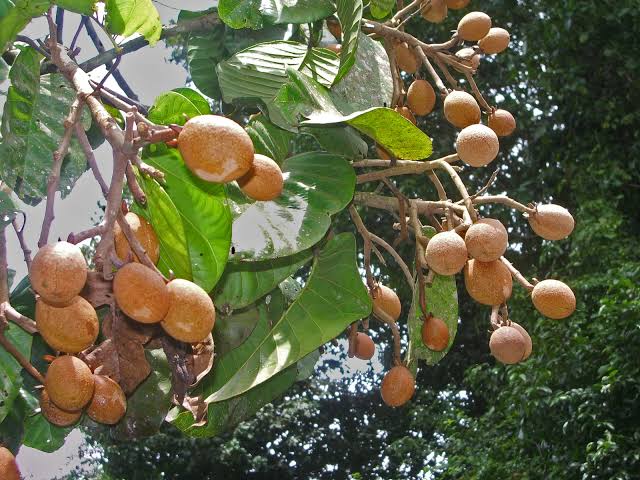
Systematic Classification:
Division : Angiospermae
Class : Dicotyledons
Order : Malvales
Family : Dipterocarpaceae
Genus : Vateria
Species : indicaCommon Name:
White dammar, Kuntrikkappayin, Safed Daamar, Turulakkam.
General Information:
It is endemic to the Western Ghats mountains in India. It is threatened by habitat lost. Evergreen trees with cylindrical, straight boles, growing up to 40 m tall, occasionally up to 60 m.In evergreen forests, the trees can grow to large girth, with an individual reaching up to 5.26 m in girth recorded in Kodagu. The bark is smooth, grey with green and white blotches on the trunk and a cream colored blaze. On scarring, it exudes a white, aromatic resin. The tree has dense foliage in a oval or dome-like canopy. The young branchlets are nearly cylindrical and have stellate (star-shaped) hairs. The leaves, which are simple, alternate, and arranged in a spiral around the twigs, are leathery, about 8-27 x 4.5–10 cm in size, glabrous, elliptic-oblong, with a short pointed tip, rounded base, and entire margin. The young leaf flush is a dark red or maroon, turning to pinkish red and green as the leaf matures. The petioles are 2 to 3.5 cm long, swollen at apex, and nearly glabrous, with narrow lateral stipules that fall off. The venation of the leaves comprises 13 to 20 pairs of secondary nerves, with closely parallel tertiary nerves at right angles to the secondaries. The inflorescence appears in axillary panicles densely clothed in stellate hairs. The flowers are white, fragrant, about 2 cm across, with 5 petals, about 40-50 stamens and yellow anthers,] with a columnar style that protrudes beyond the anthers.] The fruit is a 3-valved capsule, brown, and oblong or egg-shaped, about 6.4 x 3.8 cm in size. The base of the fruit has the persistent remains of the calyx with the 5 sepals curved back. The ovary is 3-celled, with 2 ovules in each cell, but the fruit typically produces a single seed with large cotyledons. The average weight of the mature fruit (±SE) is 72.6 (± 4.4) g; the fruit has a thick and hard pericarp and bulky cotyledons weighing about 13.2 (± 1.4) g.
Economic Importance:
- Vateria indica wood has been used for making tea-chests, partitions, packing and cordite cases, coffins, boxes, planking, posts, floorings, ceilings, and cabinets, besides bobbins and shuttles in the textile industry, oars for sea-going vessels, and match-splints.
- The wood, after preservative treatment, was also used for railway sleepers.
- The bark, resin, and leaves are used in Ayurvedic, Siddha, Unani, and folk medicine for the treatment of leprosy, eczema, rheumatism, diarrhoea, and ulcers. Fine shavings of resin are administered internally to check diarrhoea.
- Vateria indica oil, produced from the seeds, is refined to yield a fat used in confectionery and cosmetics.
